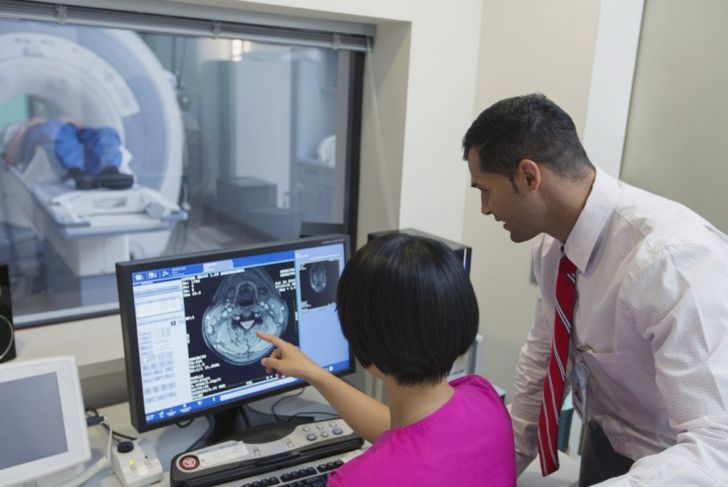Agnosia is a general term that describes an inability for a person to recognize faces, voices, places, or objects. The various forms of agnosia are incredibly rare and are often difficult to diagnose. An individual with agnosia is still able to think, speak, and interact normally, though they may have difficulty when they encounter something their agnosia prevents them from recognizing. There are three general forms of agnosia, each with a multitude of sub-conditions.
Visual Agnosia
A person with visual agnosia is incapable of recognizing something by looking at it. This is a broad category of agnosia with two subtypes: apperceptive and associative. Apperceptive visual agnosia means an individual has difficulty assembling parts of an image into something they understand. For example, some patients with this form of agnosia struggle to tell the difference between a Scrabble tile and a poker chip, despite the clear differences in their shape, color, and size. Associative visual agnosia is an inability to recall information about an object. This includes the object’s name, purpose, and origin.
Types of Visual Agnosia
Many conditions stem from visual agnosia. Many people have heard about prosopagnosia or face blindness. Essentially, individuals with this condition cannot consciously recognize faces and may even lack the ability to recognize their own face. Many people with prosopagnosia originally believe they are simply bad at remembering names. Pure alexia is an inability to recognize text. Individuals with pure alexia can still write, though they cannot read printed material word by word. Instead, they read words letter by letter.
Auditory Agnosia
Some people have a form of agnosia that prevents them from recognizing or differentiating between sounds. Those with auditory agnosia are still capable of speaking, reading, and writing. They can use terms to describe a noise but remain incapable of recognizing it. For example, they may describe a car engine as an animal roaring. They would not be able to associate the sound with a car and they wouldn’t be able to say what animal was performing the roar. It is possible that this is an advanced form of another type of agnosia or a mild form of cerebral deafness.
Auditory Verbal Agnosia
Though it is similar to pure auditory agnosia, auditory verbal agnosia is slightly different. Auditory verbal agnosia is the inability to recognize or process speech despite being able to hearing it. Some people with auditory verbal agnosia describe the condition as speaking with a person in another language. There are recognizable sounds, but those sounds hold no meaning for the person with the condition. In some cases, the individual can replicate the sound and still not understand what the word means.
Types of Auditory Agnosia
Auditory agnosia conditions are often difficult to describe given the personal nature of the condition. Phonagnosia describes an inability to recognize a person’s voice, but words remain understandable. Cortical deafness is a particularly complex form of agnosia that features a complete inability to hear sounds. However, the individual has no damage to their ear or hearing. Some experts believe this is a combination of auditory verbal agnosia and auditory agnosia. Though patients with cortical deafness seem and feel deaf, they can still exhibit reflex responses such as turning towards the source of a loud sound. This suggests that these people are unaware of sounds but are still capable of hearing them.
Tactile Agnosia
Just as other forms of agnosia mark an inability to recognize things through sight or sound, tactile agnosia is an inability to recognize them with touch. People with tactile agnosia may be capable of feeling certain qualities of an object but remain incapable of associating them with each other or the object itself. In most cases, these individuals can still recognize objects via sight. As a result, tactile agnosia conditions may remain hidden for many years.
Types of Tactile Agnosia
The most defining form of tactile agnosia is astereognosis, an inability to identify objects with only touch. People with astereognosis can still name the object, describe it, and draw it, but are incapable of closing their eyes and identifying it with tactile clues. Autotopagnosia is a condition that causes a person to lose their ability to orient parts of their own body. Most people are capable of subconsciously recognizing where their body parts are in relation to each other. Those with autotopagnosia lose this ability and may have resulting coordination issues.
Causes
There are many different causes of agnosia. Some result from strokes, dementia, or other neurological disorders that damage the parts of the brain responsible for handling sensory inputs. Head injuries, infections, or hereditary issues may also be the cause. Most forms of agnosia occur following damage to the occipital or parietal lobes of the brain. If a patient experiences a dramatic recovery from blindness, they almost always develop some form of agnosia.
Diagnosis
Three key aspects of diagnosing any type of agnosia are determining if the patient has a loss of sensation, diminished language abilities, or intelligence issues. Patients with agnosia experience a sensory issue in only one modality, such as tactile, visual, or auditory. Additionally, doctors must make a distinction between apperceptive and associative agnosia. Visual agnosia tests may involve copying and drawing objects. Auditory agnosia tests often involve describing and identifying sound recordings, though auditory verbal agnosia may be easy to diagnose through a simple conversation. Tactile agnosia is harder to diagnose but may involve blindfold tests or coordination studies.
Treatment
For most people, there is no cure for any form of agnosia. Most treatment focuses on improving the person’s ability to use their other senses to compensate for their agnosia. Additionally, treatments will vary depending on the specific type of agnosia. For example, a person with prosopagnosia may repeat other people’s descriptions of a face. Alternatively, people may rely on alternate cues such as hair or tattoos to identify another, rather than their face. If they’re incapable of identifying an object by sight, they may describe its tactile characteristics.

 Home
Home Health
Health Diet & Nutrition
Diet & Nutrition Living Well
Living Well More
More




















